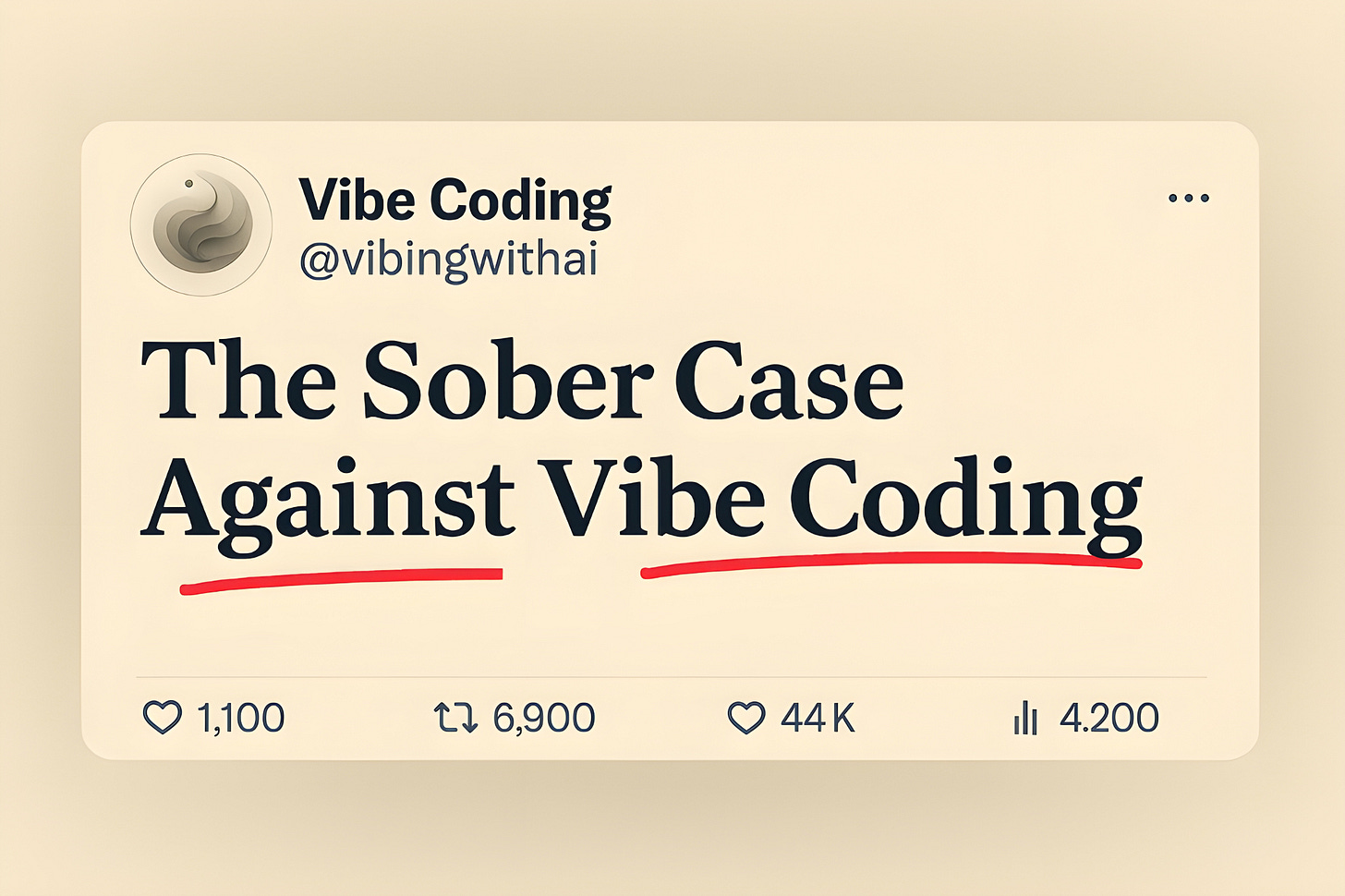The Sober Case Against Vibe Coding — 50 Risks Vibe Coders Can’t Afford to Ignore
When code grows beyond your comprehension, what grows with it is the risk
Why This Guide Exists
Vibe coding—the practice of building apps by prompting AI instead of writing traditional code—is reshaping who can build software.
It’s faster, more accessible, and often powerful. But it's also risky in ways that aren't obvious to new builders.
This isn't a rant against AI-assisted development.
It’s a field manual for those who want to move fast without losing sight of quality, security, or long-term viability.
These 50 arguments, drawn from experienced developers across Reddit, Hacker News, and industry circles, are not nostalgia for the old ways. They are hard-won lessons about what makes software survive, scale, and earn trust—lessons that vibe coding workflows too often forget.
If you're using AI to create products, especially as a non-technical founder or indie builder, understanding these risks isn't optional. It's survival.
This series isn’t a rant.
It isn’t a gatekeeping tantrum.
It’s not resistance to change.
I’ve been building software for more than fifteen years—through waves of hype, through the rise of frameworks, clouds, APIs, and now AI. The pace of change today is breathtaking—even insiders can barely predict what’s next.
But some patterns repeat, no matter how fast the tools evolve.
What follows is a distillation—not just of personal experience—but of hundreds of debates, thousands of comments, and real-world reflections from developers who’ve lived it (all before AI): across Reddit, HackerNews, and beyond.
Traditional developers—those who spent nights debugging memory leaks, diagramming system architectures, and sweating over durability—know something Vibe Coders often forget:
Real software isn’t just code that runs.
It’s code that survives.
It’s systems that scale, endure, and earn trust.
Vibe Coding, a “new kind of coding” coined by one of the luminaries of AI research, has rapidly become a movement.
Users can now generate functioning code using simple English prompts—whether through AI chat applications like ChatGPT and Claude, integrated coding tools like Cursor and Windsurf, or CodeGen platforms like Lovable, Firebase Studio, v0, and Bolt. While these tools serve different roles, they’re all powered by the same underlying large language models that make natural language coding possible.
That’s powerful.
But when misunderstood, it’s also dangerous.
This guide will unpack why.
Not to reject progress.
But to sharpen it, so that speed doesn’t kill durability.
So that early wins don’t hide fatal flaws.
So that more builders can not only launch, but also last.
Let’s start with the first and most seductive risk:
Why speed isn’t depth.
Keep reading with a 7-day free trial
Subscribe to Vibe Coding to keep reading this post and get 7 days of free access to the full post archives.



